Abstract
A study of the degradation of plant cell walls by the mixture of enzymes present in Pectinol R-10 is described. A “wall-modifying enzyme” has been purified from this mixture by a combination of diethylaminoethyl cellulose, Bio Gel P-100, and carboxymethyl cellulose chromatography. Treatment of cell walls with the “wall-modifying enzyme” is shown to be a necessary prerequisite to wall degradation catalyzed by a mixture of polysaccharide-degrading enzymes prepared from Pectinol R-10 or by an α-galactosidase secreted by the pathogenic fungus Colletotrichum lindemuthianum. The action of the “wall-modifying enzyme” on cell walls is shown to result in both a release of water-soluble, 70% ethanol-insoluble polymers and an alteration of the residual cell wall. A purified preparation of the “wall-modifying enzyme” is unable to degrade a wide variety of polysaccharide, glycoside, and peptide substrates. However, the purified preparation of wall-modifying enzyme has a limited ability to degrade polygalacturonic acid. The fact that polygalacturonic acid inhibits the ability of the “wall-modifying enzyme” to affect cell walls suggests that the “wall-modifying enzyme” may be responsible for the limited polygalacturonic acid-degrading activity present in the purified preparation. The importance of a wall-modifying enzyme in developmental processes and in pathogenesis is discussed.
Full text
PDF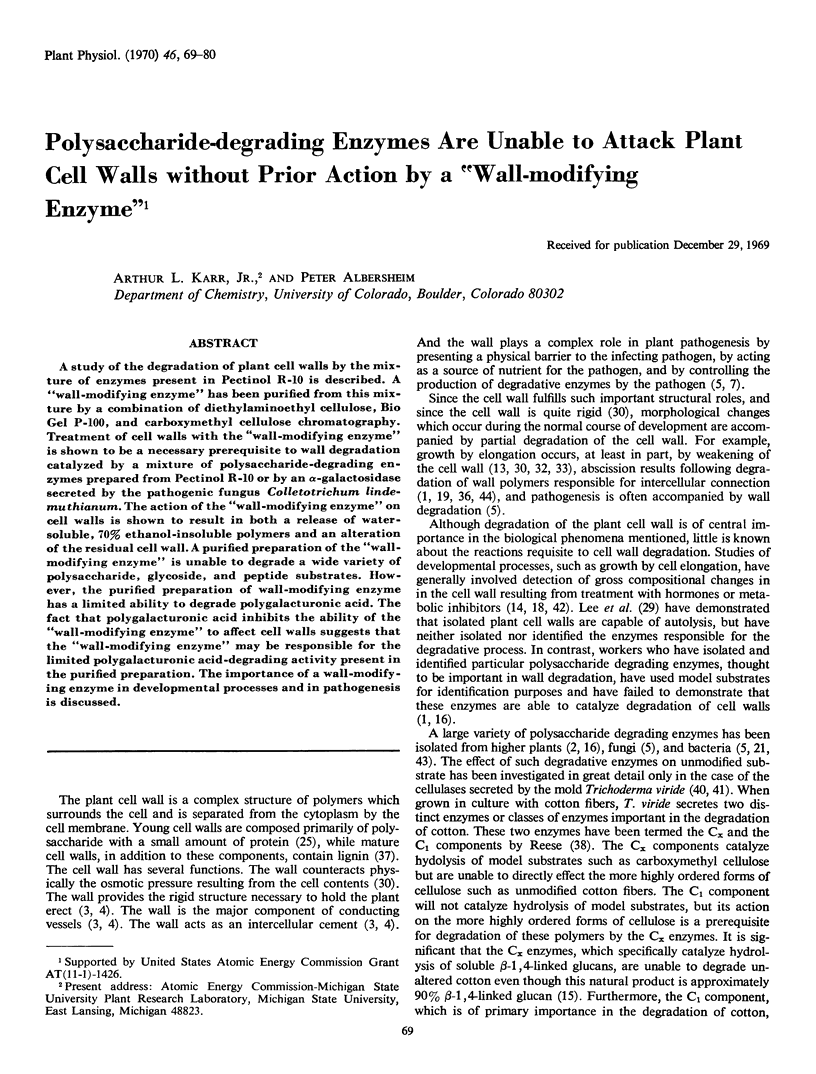
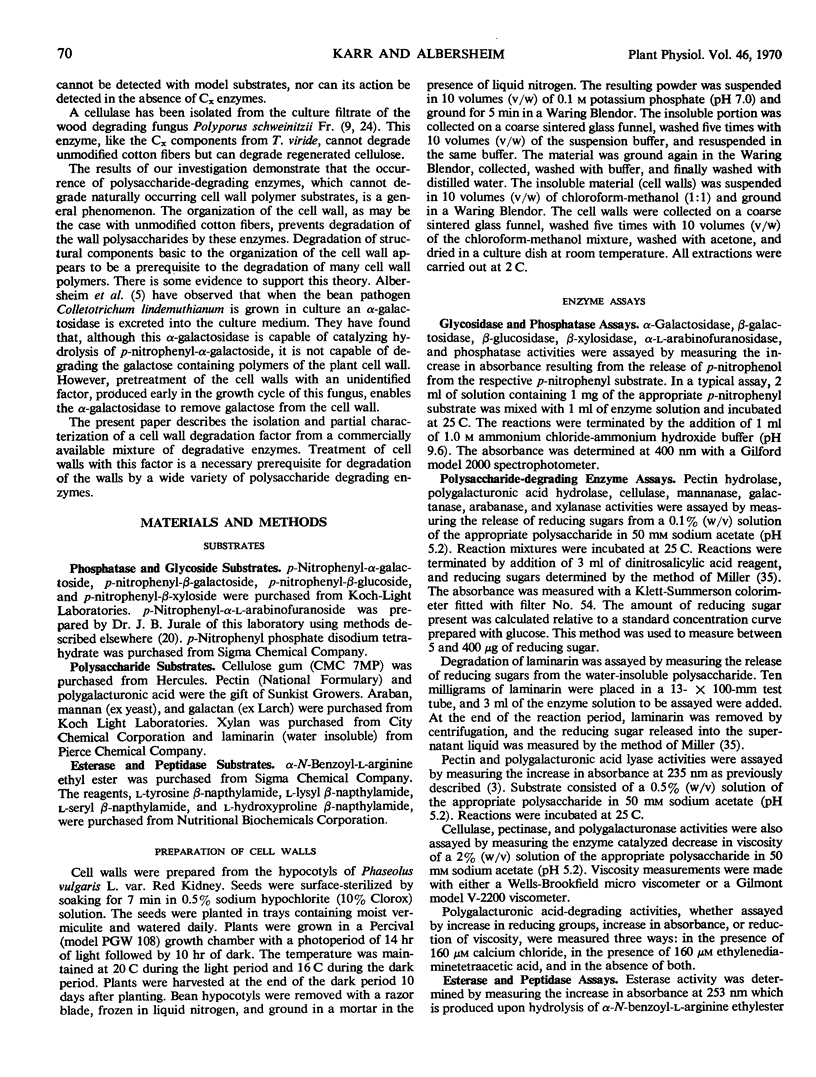
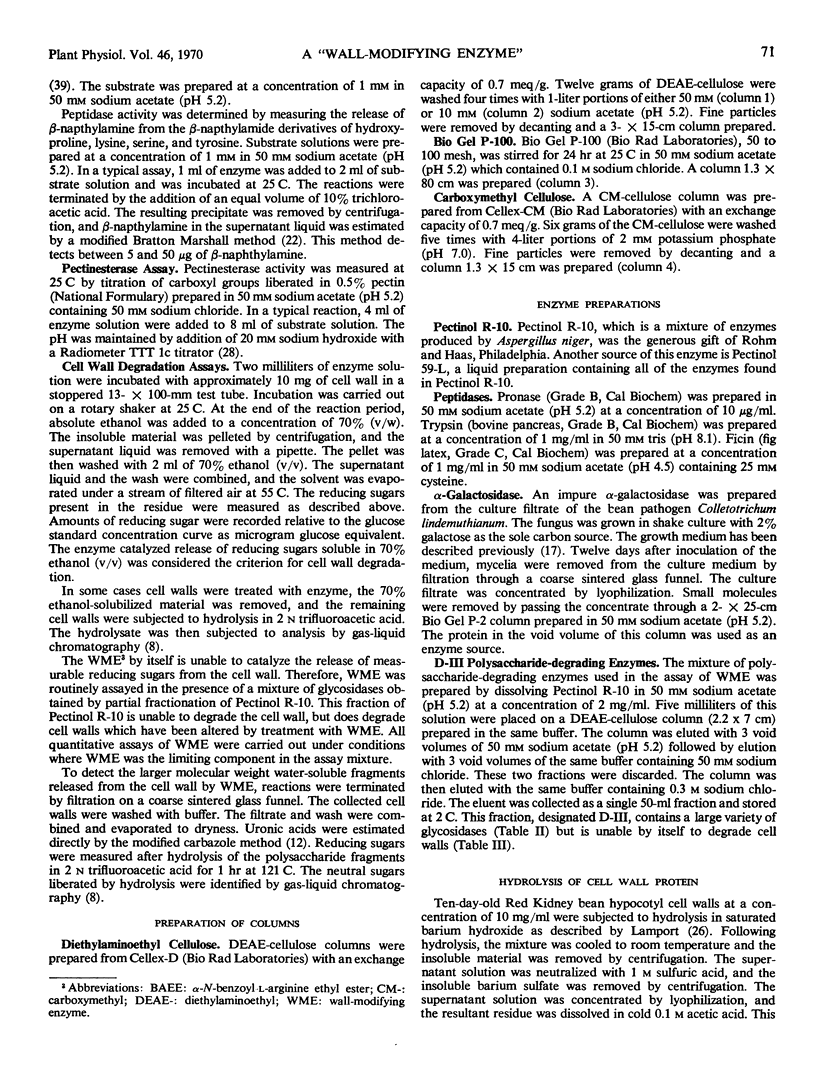
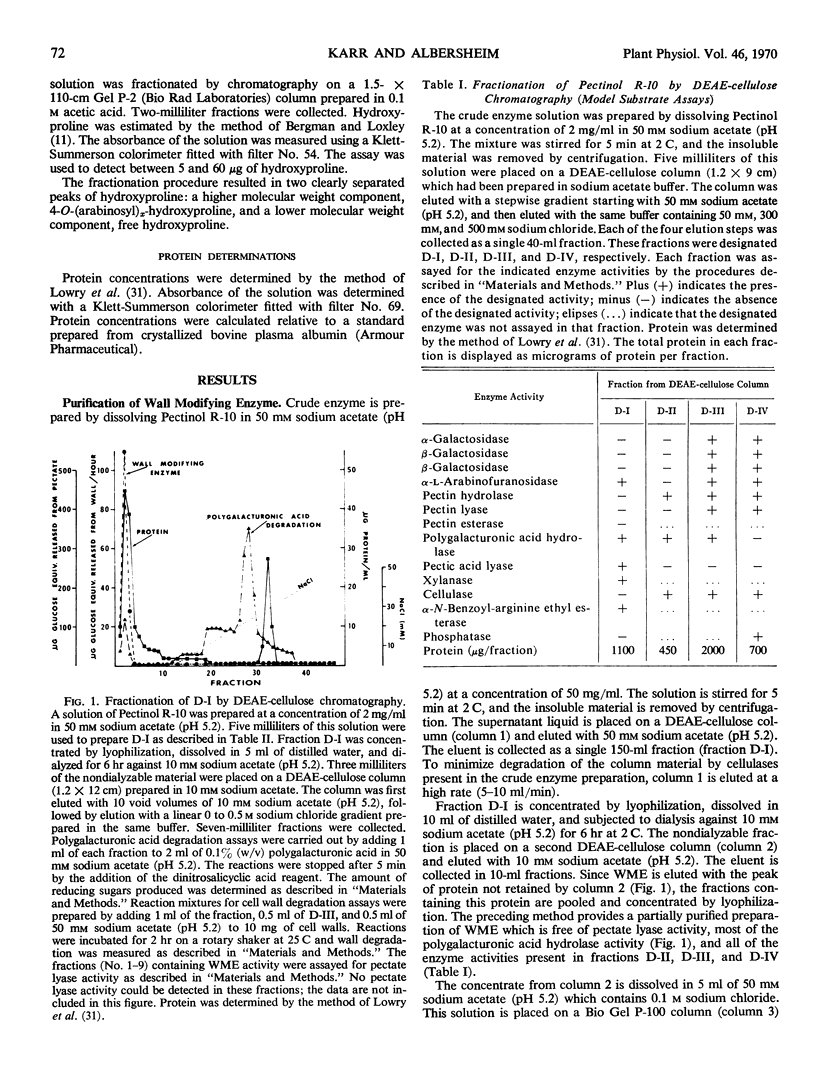
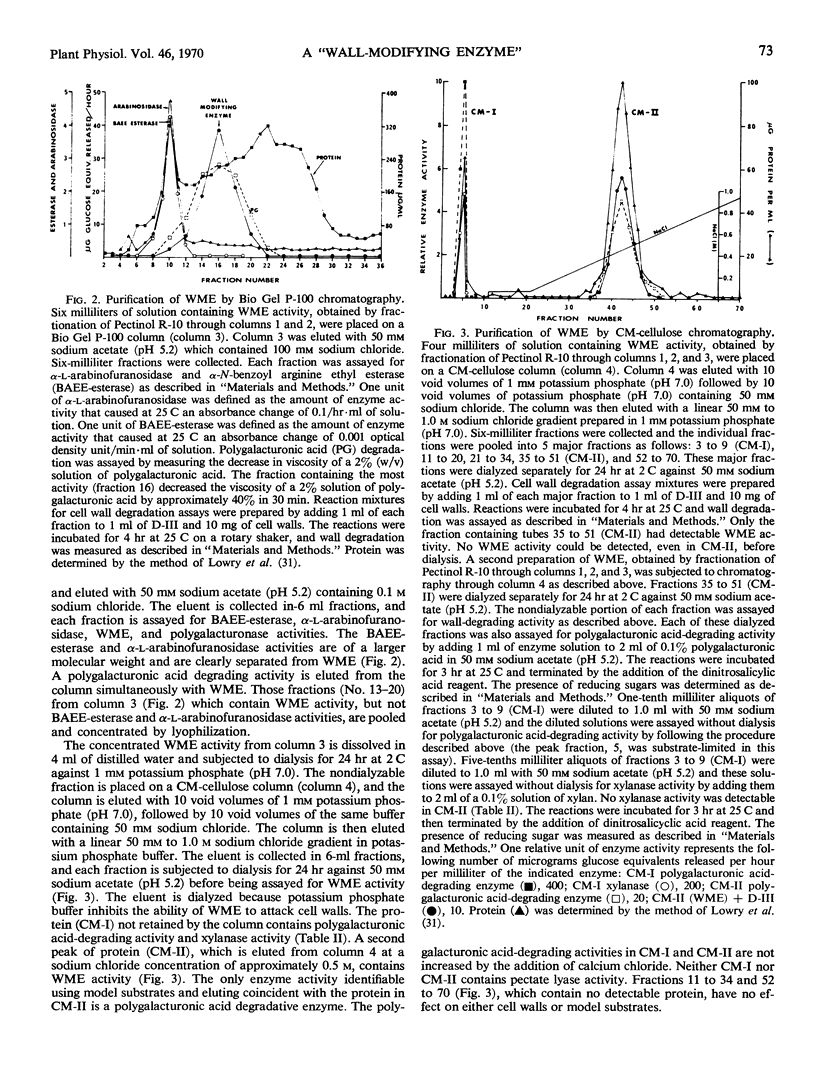
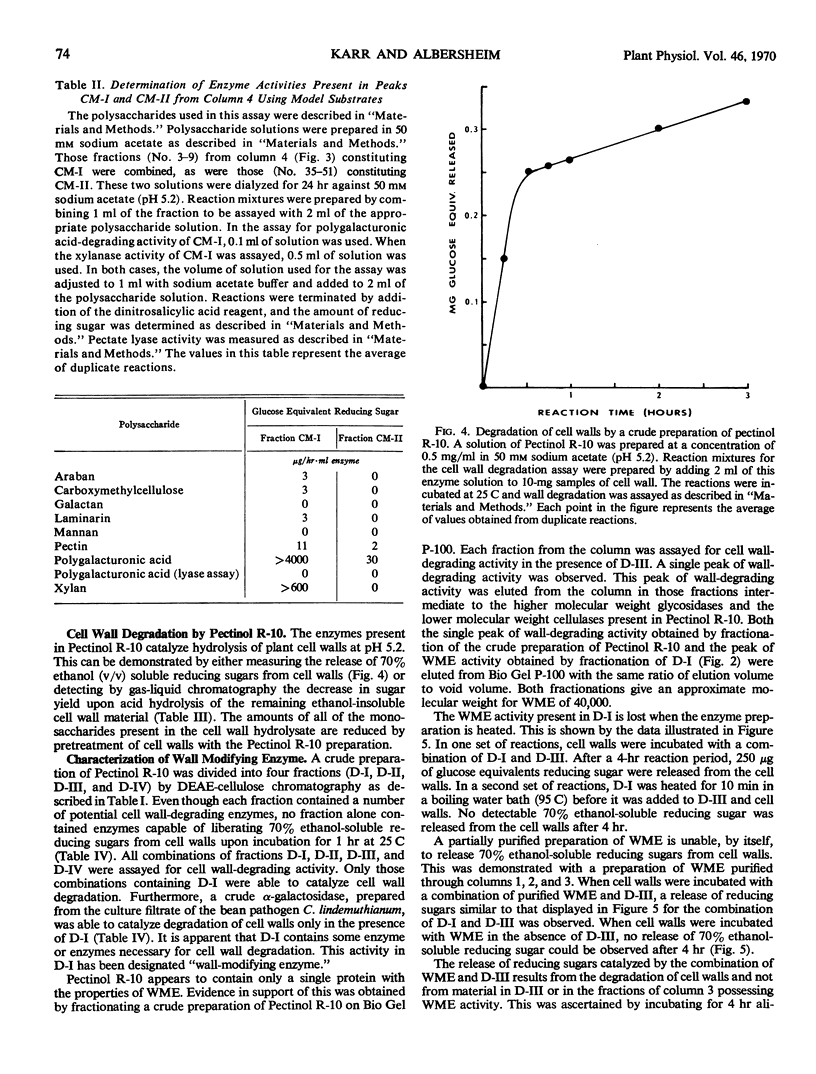
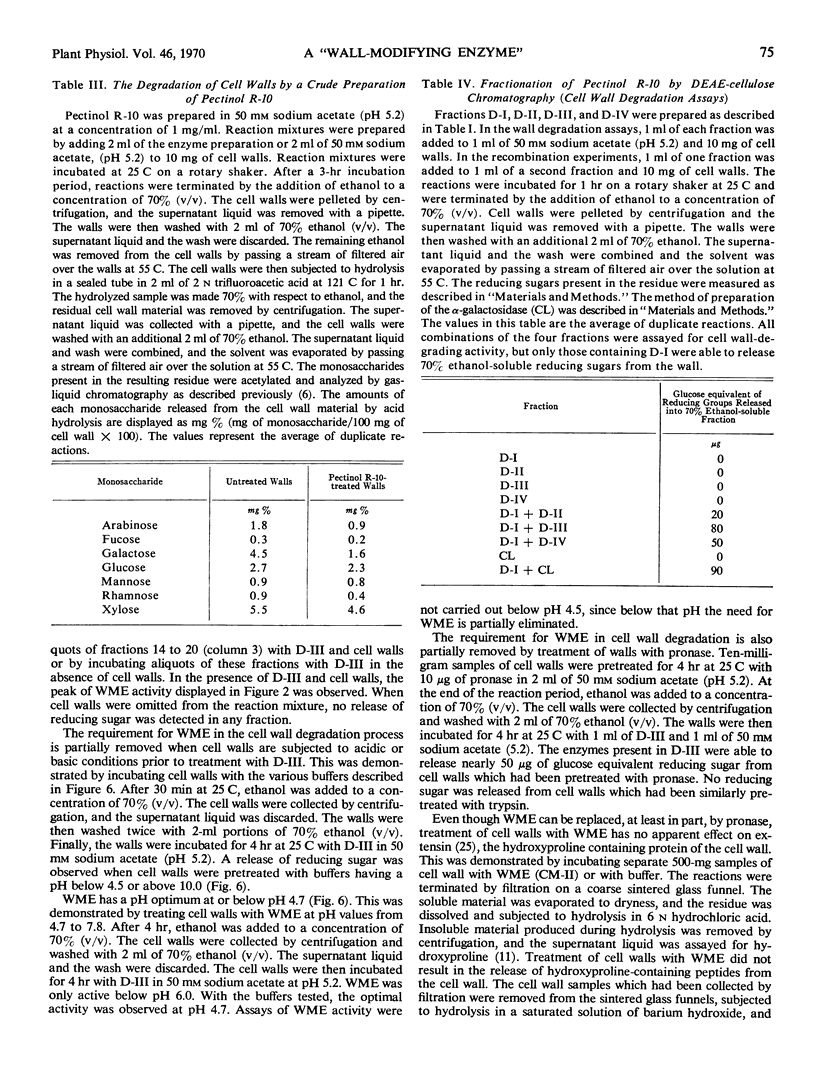
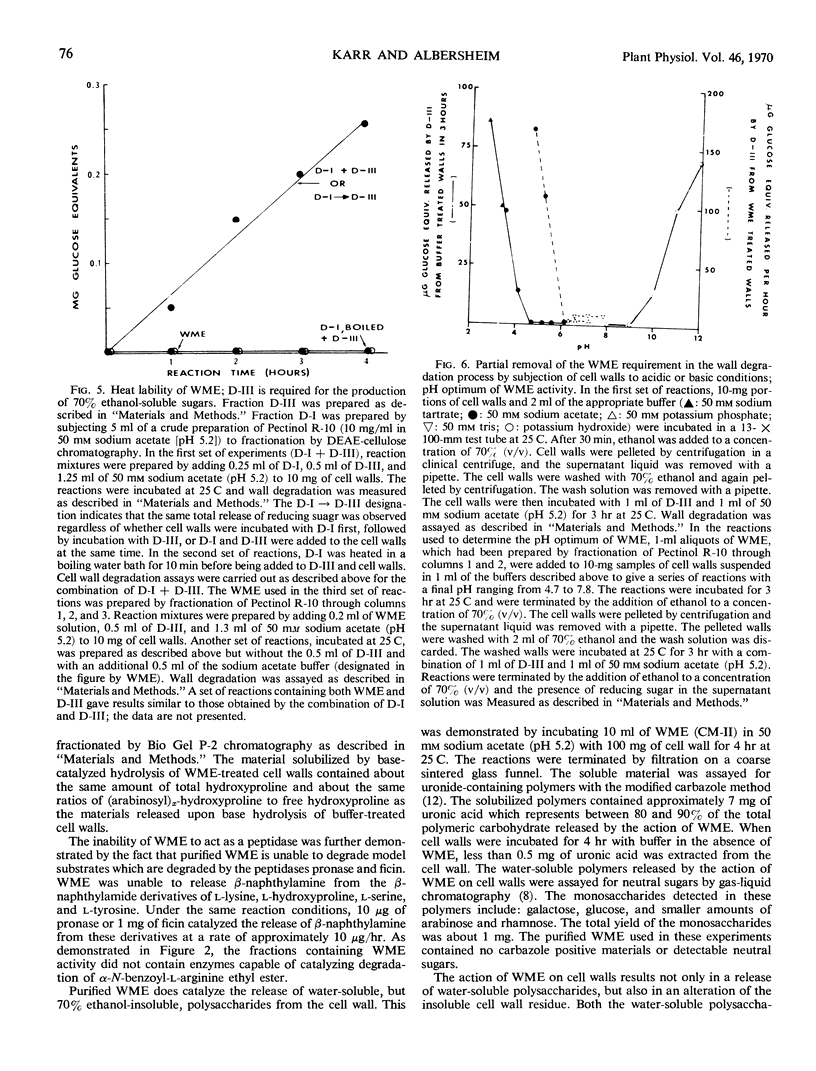
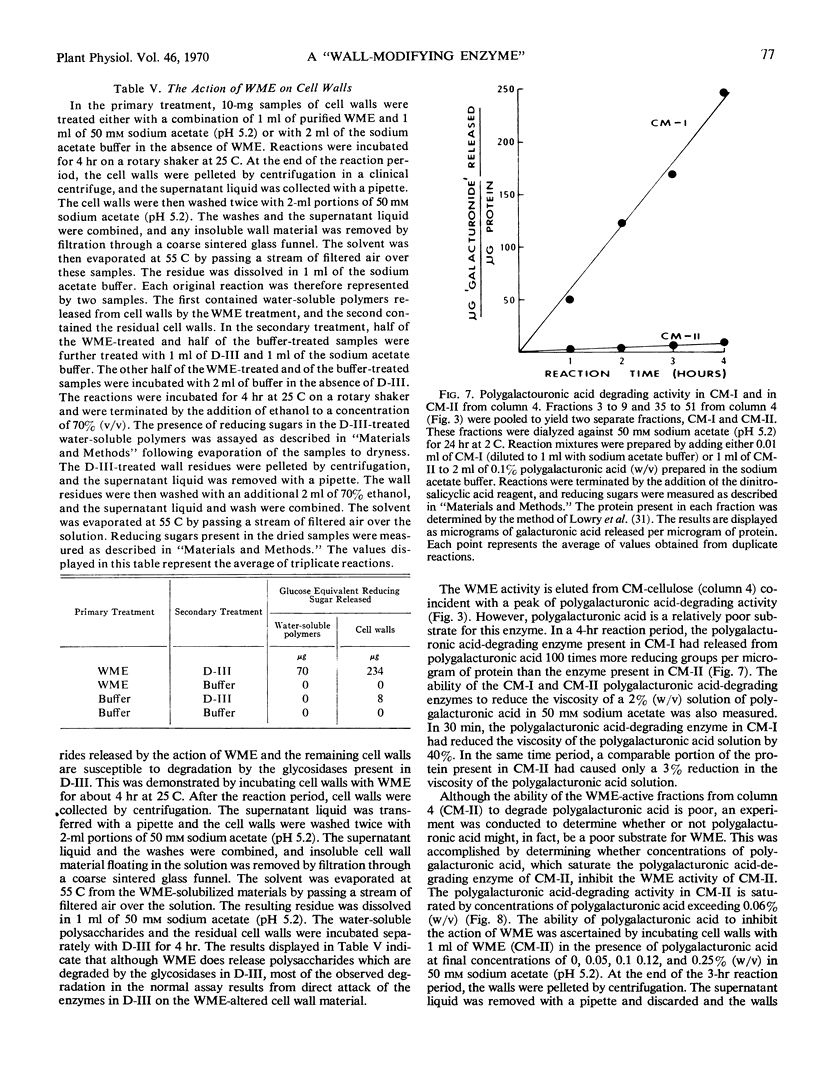
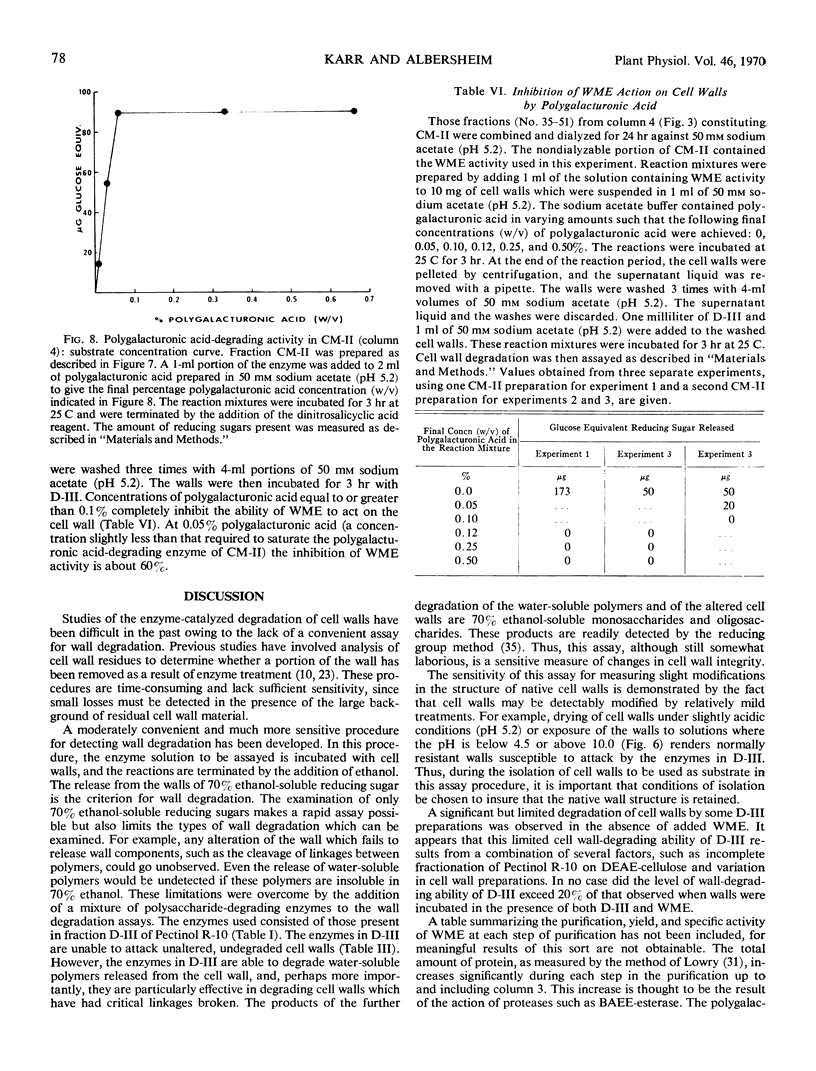
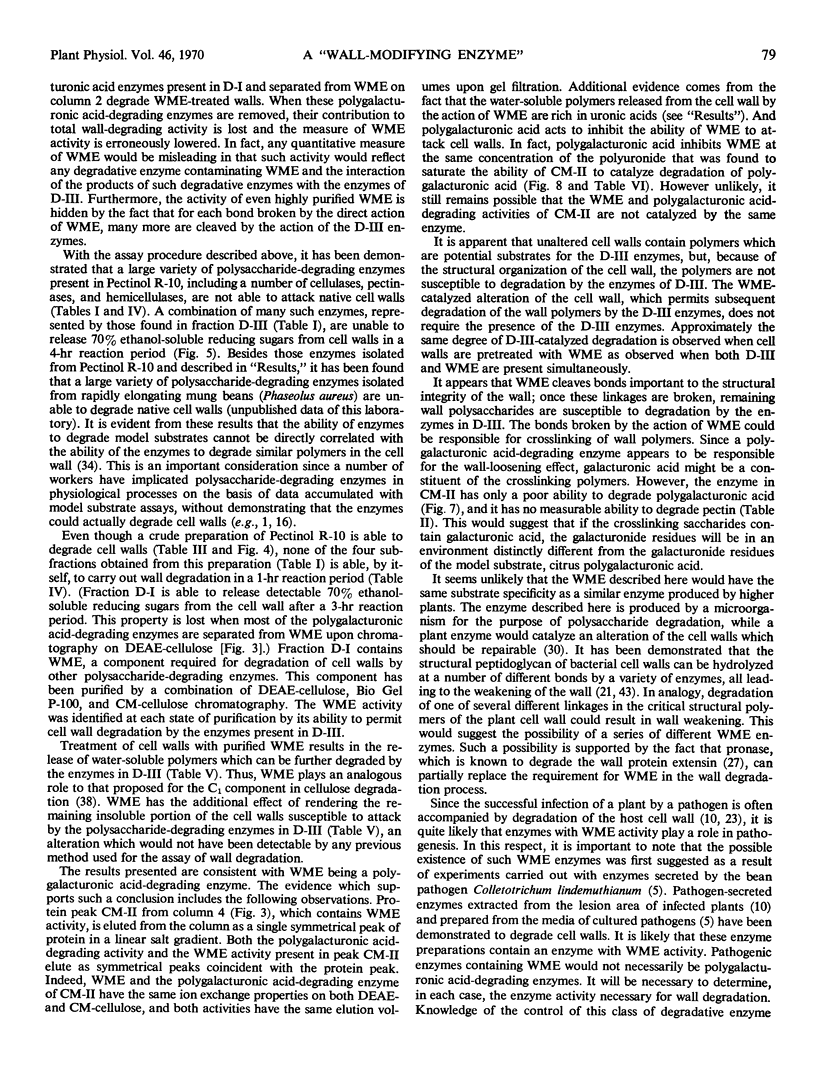
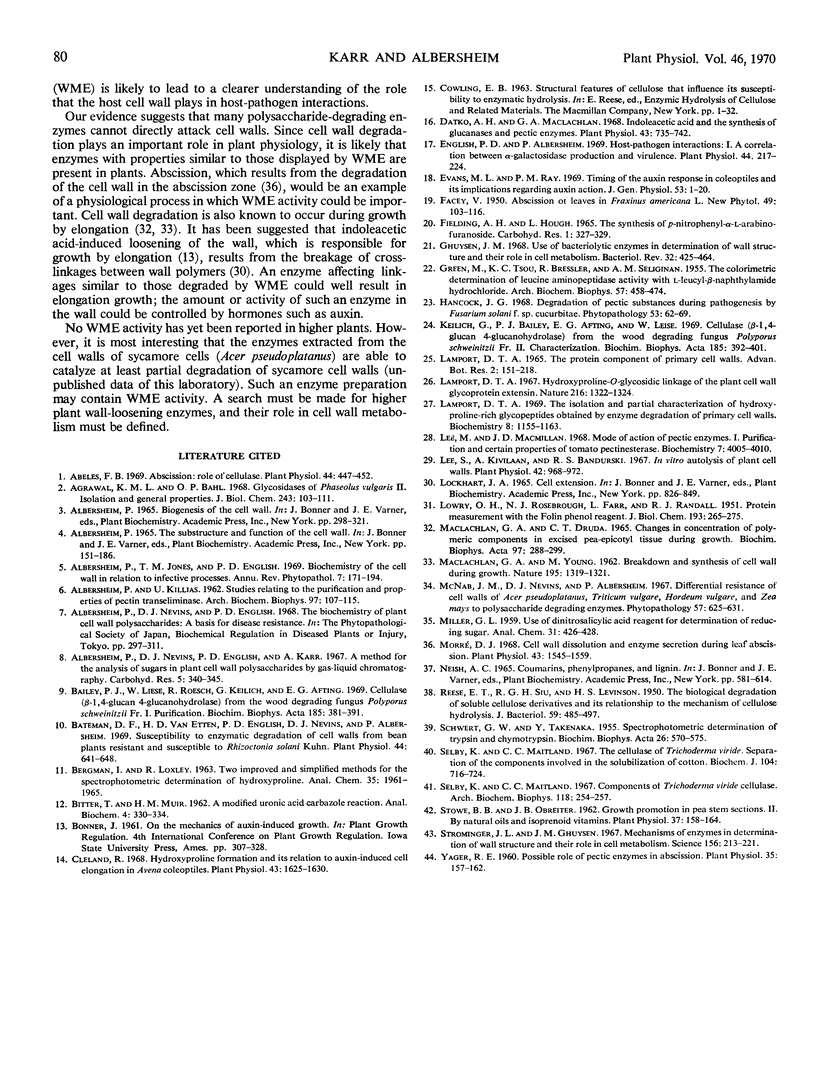
Selected References
These references are in PubMed. This may not be the complete list of references from this article.
- ALBERSHEIM P., KILLIAS U. Studies relating to the purification and properties of pectin transeliminase. Arch Biochem Biophys. 1962 Apr;97:107–115. doi: 10.1016/0003-9861(62)90050-4. [DOI] [PubMed] [Google Scholar]
- Abeles F. B. Abscission: role of cellulase. Plant Physiol. 1969 Mar;44(3):447–452. doi: 10.1104/pp.44.3.447. [DOI] [PMC free article] [PubMed] [Google Scholar]
- Agrawal K. M., Bahl O. P. Glycosidases of Phaseolus vulgaris. II. Isolation and general properties. J Biol Chem. 1968 Jan 10;243(1):103–111. [PubMed] [Google Scholar]
- BITTER T., MUIR H. M. A modified uronic acid carbazole reaction. Anal Biochem. 1962 Oct;4:330–334. doi: 10.1016/0003-2697(62)90095-7. [DOI] [PubMed] [Google Scholar]
- Bailey P. J., Liese W., Roesch R., Keilich G., Afting E. G. Cellulase (beta-1,4-glucan 4-glucanohydrolase) from the wood-degrading fungus Polyporus schweinitzii Fr. I. Purification. Biochim Biophys Acta. 1969;185(2):381–391. doi: 10.1016/0005-2744(69)90431-8. [DOI] [PubMed] [Google Scholar]
- Bateman D. F., Van Etten H. D. Susceptibility to Enzymatic Degradation of Cell Walls From Bean Plants Resistant and Susceptible to Rhizoctonia solani Kuhn. Plant Physiol. 1969 May;44(5):641–648. doi: 10.1104/pp.44.5.641. [DOI] [PMC free article] [PubMed] [Google Scholar]
- Cleland R. Hydroxyproline Formation and Its Relation to Auxin-induced Cell Elongation in the Avena Coleoptile. Plant Physiol. 1968 Oct;43(10):1625–1630. doi: 10.1104/pp.43.10.1625. [DOI] [PMC free article] [PubMed] [Google Scholar]
- Datko A. H., Maclachlan G. A. Indoleacetic Acid and the synthesis of glucanases and pectic enzymes. Plant Physiol. 1968 May;43(5):735–742. doi: 10.1104/pp.43.5.735. [DOI] [PMC free article] [PubMed] [Google Scholar]
- English P. D., Albersheim P. Host-Pathogen Interactions: I. A Correlation Between alpha-Galactosidase Production and Virulence. Plant Physiol. 1969 Feb;44(2):217–224. doi: 10.1104/pp.44.2.217. [DOI] [PMC free article] [PubMed] [Google Scholar]
- Evans M. L., Ray P. M. Timing of the auxin response in coleoptiles and its implications regarding auxin action. J Gen Physiol. 1969 Jan;53(1):1–20. doi: 10.1085/jgp.53.1.1. [DOI] [PMC free article] [PubMed] [Google Scholar]
- GREEN M. N., TSOU K. C., BRESSLER R., SELIGMAN A. M. The colorimetric determination of leucine aminopeptidase activity with L-leucyl-beta-naphthylamide hydrochloride. Arch Biochem Biophys. 1955 Aug;57(2):458–474. doi: 10.1016/0003-9861(55)90307-6. [DOI] [PubMed] [Google Scholar]
- Ghuysen J. M. Use of bacteriolytic enzymes in determination of wall structure and their role in cell metabolism. Bacteriol Rev. 1968 Dec;32(4 Pt 2):425–464. [PMC free article] [PubMed] [Google Scholar]
- Keilich G., Bailey P. J., Afting E. G., Liese W. Cellulase (beta-1,4-glucan 4-glucanohydrolase) from the wood-degrading fungus Polyporus schweinitzii Fr. II. Characterization. Biochim Biophys Acta. 1969;185(2):392–401. doi: 10.1016/0005-2744(69)90432-x. [DOI] [PubMed] [Google Scholar]
- LOWRY O. H., ROSEBROUGH N. J., FARR A. L., RANDALL R. J. Protein measurement with the Folin phenol reagent. J Biol Chem. 1951 Nov;193(1):265–275. [PubMed] [Google Scholar]
- Lamport D. T. The isolation and partial characterization of hydroxyproline-rich glycopeptides obtained by enzymic degradation of primary cell walls. Biochemistry. 1969 Mar;8(3):1155–1163. doi: 10.1021/bi00831a049. [DOI] [PubMed] [Google Scholar]
- Lee M., Macmillan J. D. Mode of action of pectic enzymes. I. Purification and certain properties of tomato pectinesterase. Biochemistry. 1968 Nov;7(11):4005–4010. doi: 10.1021/bi00851a030. [DOI] [PubMed] [Google Scholar]
- Lee S. H., Kivilaan A., Bandurski R. S. In vitro autolysis of plant cell walls. Plant Physiol. 1967 Jul;42(7):968–972. doi: 10.1104/pp.42.7.968. [DOI] [PMC free article] [PubMed] [Google Scholar]
- Morre D. J. Cell wall dissolution and enzyme secretion during leaf abscission. Plant Physiol. 1968 Sep;43(9 Pt B):1545–1559. [PMC free article] [PubMed] [Google Scholar]
- REESE E. T., SIU R. G. H., LEVINSON H. S. The biological degradation of soluble cellulose derivatives and its relationship to the mechanism of cellulose hydrolysis. J Bacteriol. 1950 Apr;59(4):485–497. doi: 10.1128/jb.59.4.485-497.1950. [DOI] [PMC free article] [PubMed] [Google Scholar]
- SCHWERT G. W., TAKENAKA Y. A spectrophotometric determination of trypsin and chymotrypsin. Biochim Biophys Acta. 1955 Apr;16(4):570–575. doi: 10.1016/0006-3002(55)90280-8. [DOI] [PubMed] [Google Scholar]
- Selby K., Maitland C. C. The cellulase of Trichoderma viride. Separation of the components involved in the solubilization of cotton. Biochem J. 1967 Sep;104(3):716–724. doi: 10.1042/bj1040716. [DOI] [PMC free article] [PubMed] [Google Scholar]
- Stowe B. B., Obreiter J. B. Growth Promotion in Pea Stem Sections. II. By Natural Oils & Isoprenoid Vitamins. Plant Physiol. 1962 Mar;37(2):158–164. doi: 10.1104/pp.37.2.158. [DOI] [PMC free article] [PubMed] [Google Scholar]
- Strominger J. L., Ghuysen J. M. Mechanisms of enzymatic bacteriaolysis. Cell walls of bacteri are solubilized by action of either specific carbohydrases or specific peptidases. Science. 1967 Apr 14;156(3772):213–221. doi: 10.1126/science.156.3772.213. [DOI] [PubMed] [Google Scholar]
- YACHNIN S. Non-antigenicity of synthetic polyribonucleotides and apurinic acid. Nature. 1962 Sep 29;195:1319–1319. doi: 10.1038/1951319a0. [DOI] [PubMed] [Google Scholar]
- Yager R. E. Possible Role of Pectic Enzymes in Abscission. Plant Physiol. 1960 Mar;35(2):157–162. doi: 10.1104/pp.35.2.157. [DOI] [PMC free article] [PubMed] [Google Scholar]


